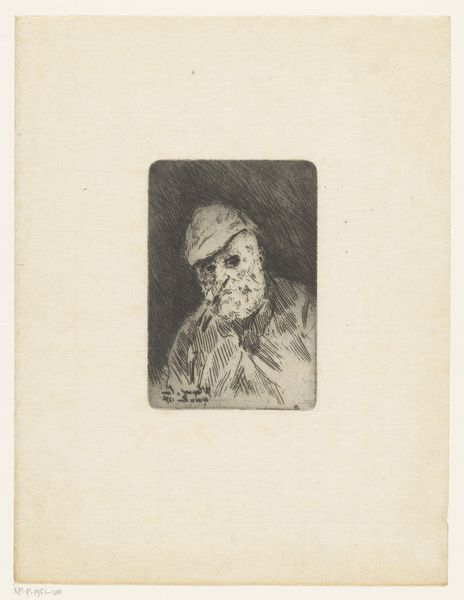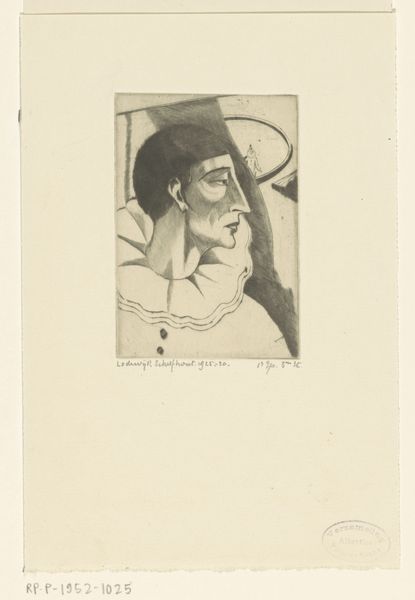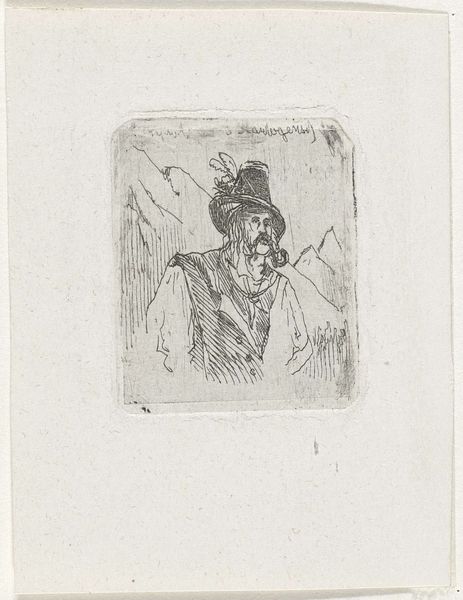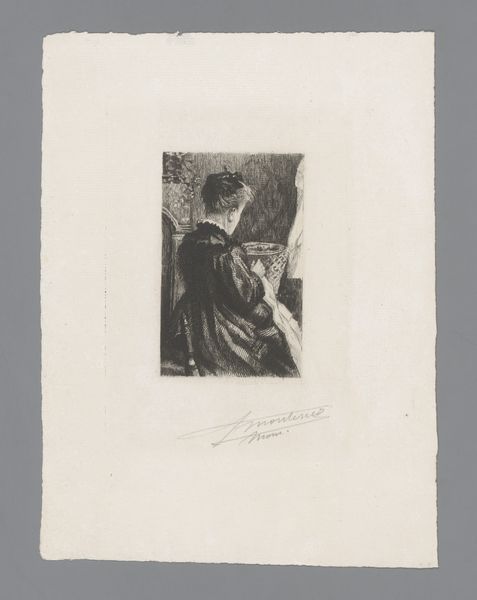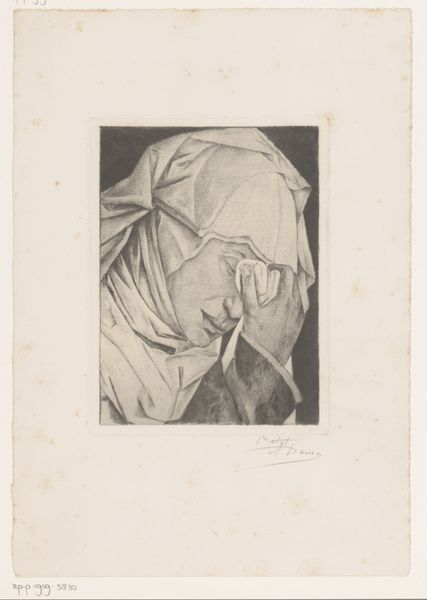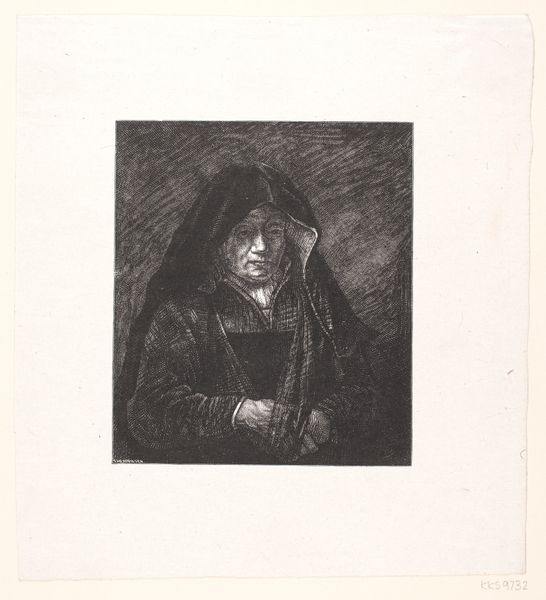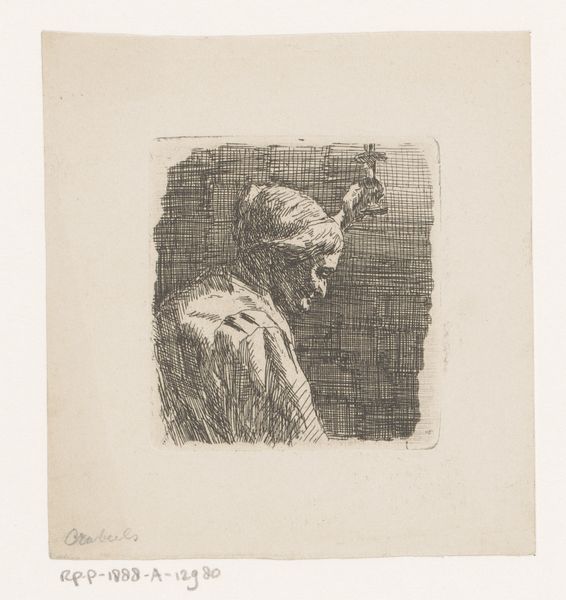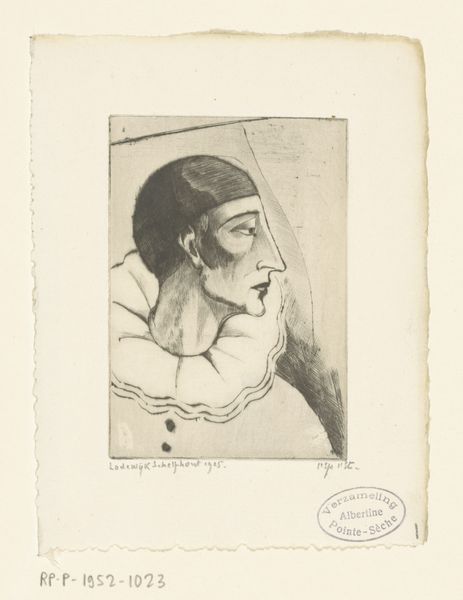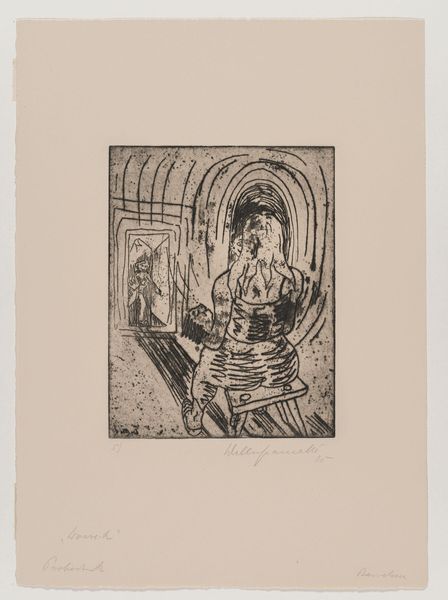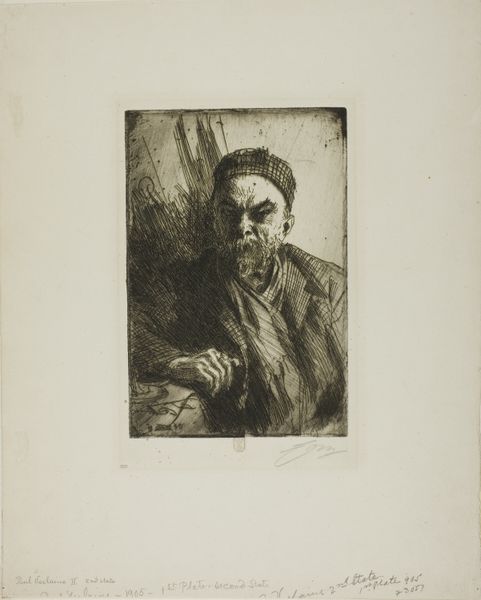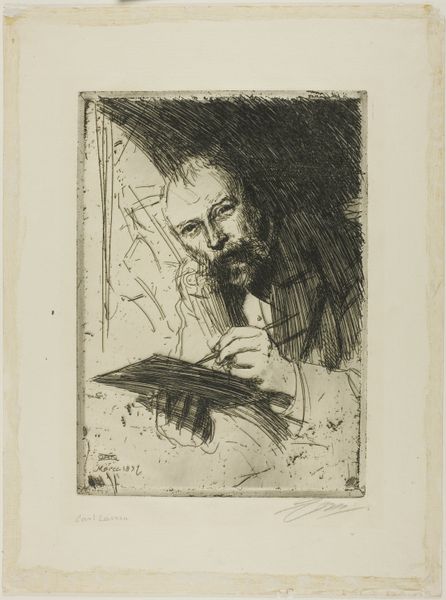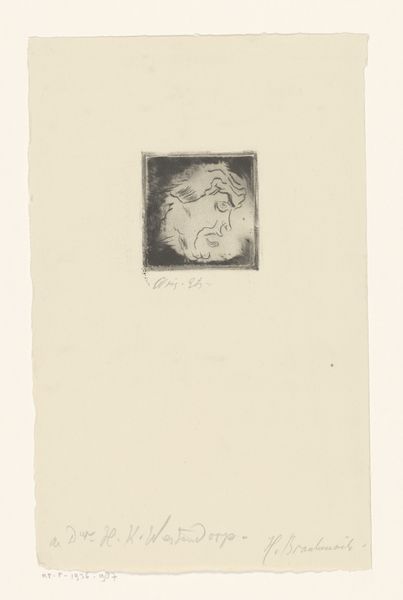
Dimensions: height 180 mm, width 142 mm
Copyright: Rijks Museum: Open Domain
Curator: Eugène Béjot's "Lezende man," or "Reading Man," created in 1891, offers a compelling snapshot of late 19th-century life, rendered through the medium of etching. It currently resides here at the Rijksmuseum. Editor: My first impression is one of weariness. The dark tones and the figure’s pose suggest mental exhaustion or perhaps a struggle to comprehend what he's reading. It’s a somber image, despite the rather mundane subject matter. Curator: The choice of etching as a medium is interesting here. The lines are fine but create a texture that is very physical. Look at how Béjot uses hatching and cross-hatching to build up tone, almost as if he were sculpting the image. The labor-intensive nature of the process is subtly reflected in the subject’s own fatigue. We also have to remember that prints democratized art, bringing images into the homes of the burgeoning middle class. Editor: And it is that universality, or rather accessibility of everyday anxieties that resonates with viewers. The hand obscuring the eyes is a gesture we all know – a visual shorthand for being overwhelmed. He becomes an archetype, a figure of the burdened intellectual or perhaps the everyman weighed down by the increasing complexities of modern life. The book is present, yet unreadable behind the hand, rendering it a symbol of knowledge unattainable, of intellectual frustration. Curator: Precisely. Furthermore, the physical scale is vital to understanding how the work would have originally circulated. It's intimate and designed for close inspection. This adds another dimension to the figure’s vulnerability; he is exposed in this small-scale portrayal, brought into your private sphere. The etching allowed multiple impressions and dissemination. Editor: I find it particularly interesting to consider this figure within the broader context of 19th-century anxieties about modernity and the intellectual's role. The Romantic era idealized intellectual pursuit but it gradually shifted towards depicting its pitfalls and burdens, represented visually. Curator: Absolutely. When we understand the materials and the means of production, and its role in making this work available in that particular format, a richer understanding of both its intent and its reach appears. Editor: For me, "Lezende man" is a haunting exploration of a universal and still-relevant emotional landscape. It asks us to consider what it means to feel burdened by the weight of knowledge, both personally and culturally.
Comments
No comments
Be the first to comment and join the conversation on the ultimate creative platform.
